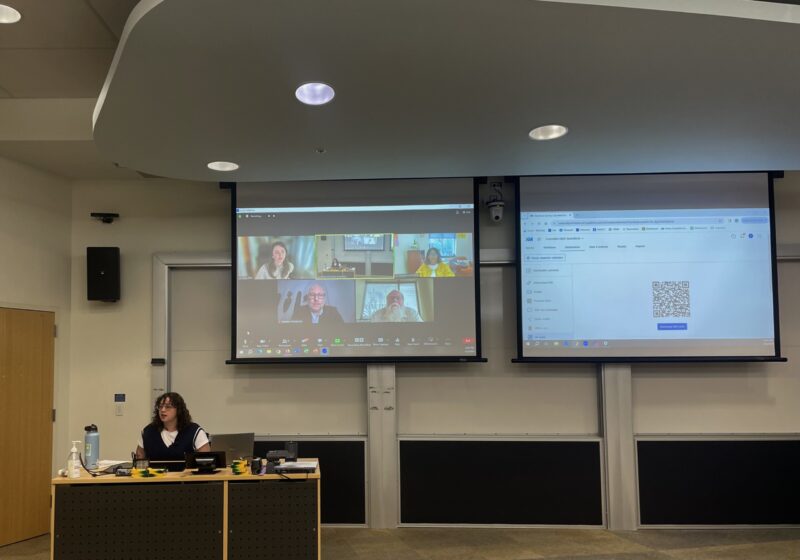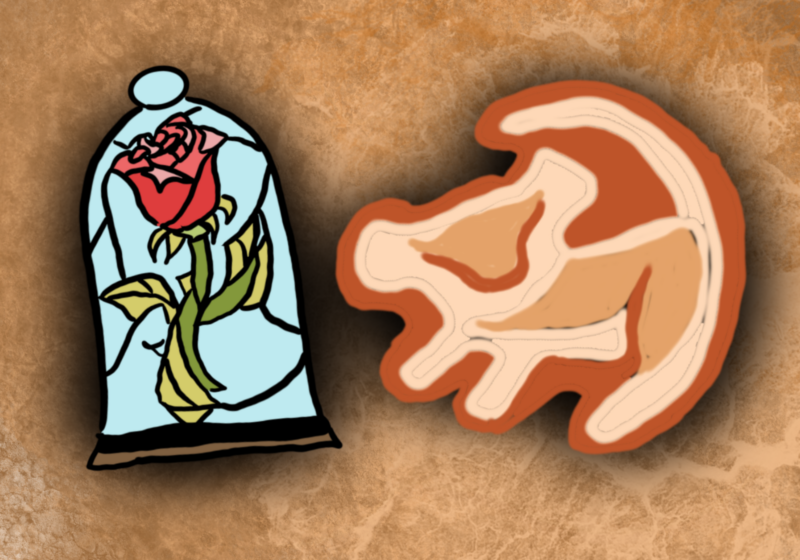On May 10, 1972, 100 students surrounded the University’s administration building, clamoring to speak with President Robert Sproull and Chancellor W. Allen Wallis. Their demands were this: The school must issue a statement regarding the conflict in Vietnam, and the University must not renew its contract with the Center for Naval Analysis (CNA).
It was 1972, and the conflict in Vietnam was still devastating Southeast Asia. Over 58,000 American soldiers had died, and young activists across the country were continuing their movement to end the bloodshed and, most of all, an unjust war. Many Ivy League schools had already cited their stance on the conflict, so UR students felt compelled to hear the views of their own administration. As for the CNA, students were worried that the work being done at the “naval think tank” was being used to influence the decisions of President Richard Nixon who had recently ordered the mining of North Vietnamese seaports.
A host of schools were showing their outrage over US involvement in Vietnam by staging massive protests and occupying university buildings. These violent and non-violent demonstrations were sometimes met with violence from local and state authorities. UR students were no strangers to the activism going on around the country. Throughout the late ‘60s and early ‘70s, there were numerous protests on campus and in the city of Rochester.
On May 9, 1972, over 350 UR students met to discuss plans for political and social mobilization. In the May 10, 1972 edition of Campus Times, it was reported that the group concluded they were “aligning with city groups, participating in actions of civil disobedience, and [converging] en masse on Washington D.C.”
Despite the student protest, Sproull refused the first demand on the grounds that a university cannot make a political statement unless the livelihood of the school is at stake. The students retorted that university alignment with the CNA was a political statement. Next, the protestors sought out Chancellor Wallis. Initially refusing to speak with the crowd, Wallis headed to a meeting in the same building, but after a brief struggle trying to shut his office door on some students, he was forced to hear out the demands.
Wallis’ reaction, much like Sproull’s, shunned the students and their movement. The 100 students remained in the Administration Building that day, effectively “occupying” the building. It was during this time that members of the administration convened, trying to figure out a plan to remove the activists. Meanwhile, the occupiers stated that they would not leave until their two demands had been met.
After 22 hours of occupation, however, the students voted almost unanimously to abandon their plan and leave. This decision came after convening with local attorney Thomas Fink and an advisory from Dean of Student Life Ronald Jackson. Jackson explained that the school would be forced to either expel or suspend the students or obtain a court injunction to clear the building with the use of police. Although the students left the building, they stood by their demands. As the school year came to a close, outgoing Students’ Association President Jon Tomar was quoted in the May 12 issue as saying “punitive measures” will probably be taken next year.
The next fall, in a trial that spanned the entire month of October, 14 of the 100 “occupiers” were placed in front of a University Judiciary Council (UJC). The trial, held in Morey 321, was open to the public. The room was at capacity for the hearing. Using the University Standards of Conduct, the UJC tried the 14 individuals for disrupting university work and life. Fink represented 11 of the individuals while undergraduates Tom Hennessey and Greg Staples represented themselves. The last student was not in the country for the trial. Over the course of the month, the prosecution slammed the defendants for reckless behavior and disruption of the campus community. The defense argued over the unfair selection of the 14 individuals considering that almost 90 other students were involved. On top of this grievance, the defense also attacks the University’s ad-hoc plan for deciding between which students were perpetrators and which were merely observers.
In the end, seven students who pleaded guilty to occupying the administration building without permission received a $300 assessment (approximately $1,700 in 2013). Four students pleaded innocent but were still found guilty of either disruption or illegal occupation of a building and were charged varying amounts. No academic penalties were declared. Hennessey was never sentenced, and Staples was acquitted. Mike van Wees, who was out of the country, was never tried.
Thomas Fink, the lawyer providing counsel for the defendants, recalls his experience with the events surrounding the trial. Fink had previously worked with students after a 1969 dispute over allowing General Maxwell Taylor to speak at the university and with students at College of Brockport after a 1970 sit-in.
“I was spending a great deal of time representing students and faculty, consciousness objectors,” Fink, who is now a partner at the Rochester law firm Davidson & Fink, said.
Fink attributes his connection to student activism at the time to his own feelings over the conflict in Vietnam.
“I was concerned about the war. I became part of an organization for testing the war”, Fink said. During the trial, Fink’s role was limited to providing advice to the defendants. During the summations, the UJC restricted his chances to speak. “I was concerned about their rights”, said Fink, who would later help the defendants with their appeals. He believes that there was never any indication that the student occupiers were violent or had any desire to cause damage to University property. Fink later served as general counsel to the student government at UR, a role that involved collaboration with bright people and very vibrant, great ideas. Fink, who was also present, as a delegate, at the 1968 Democratic National Convention in Chicago, looks back fondly on his involvement with the students of UR as “a very meaningful part of my career.”
The 100 occupiers as well as students across the US at the time of the Vietnam War, were determined to make a statement for a cause that they believed in. While today these types of statements more regularly resemble Facebook statuses, students can look back on this protest and others like it as a reminder of the impact students can have on the world.
Gilboard is a member of
the class of 2015.





